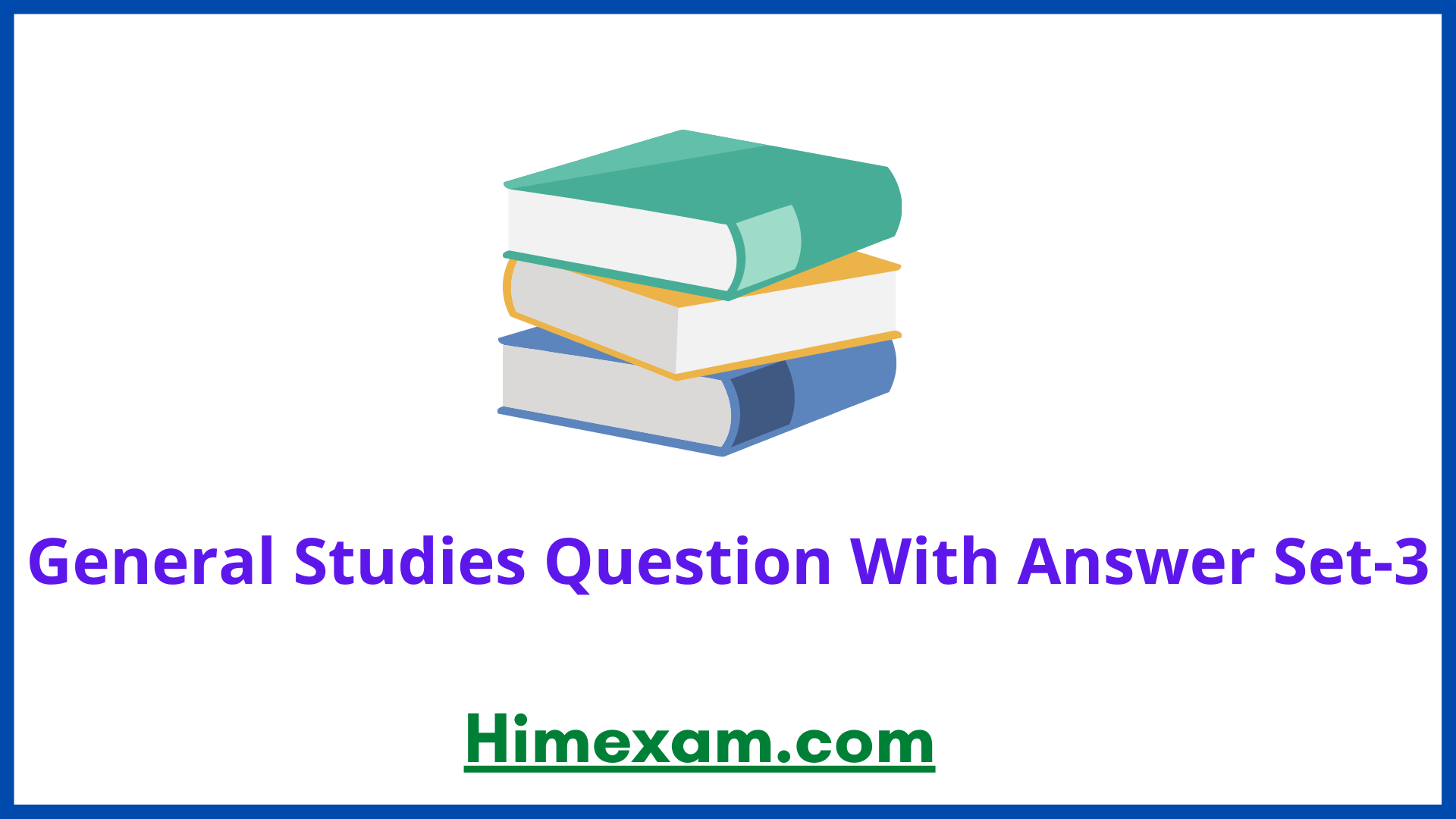General Studies Question With Answer Set-3
||General Studies Question With Answer Set-3||GS Question With Answer Set-3||General Studies Questions for has||General Studies Questions for hpas||
1. In the 1857 uprising was the culmination of the recurrent, big and small local rebellions that had occurred in the preceding hundred years of British rule. Elucidate. (150 words)
Ans. The Revolt of 1857 was the result of imperialist and capitalistic nature of the East India Company rule. The high rate of land revenues, subjugation of the grievances of the locals, involvement in the cultural traditions, impact of Christian missionaries and mistreatment of the tribal by outsiders have given genesis to several big and small local rebellions prior to 1857. The following resistance and rebellions by people culminated in 1857 Uprising:
(i) Civil Revolts The civil revolts occurred to secure the traditional and customary rights. The common causes of resentment were illegal tax demands and oppression by police, judiciary and revenue department. The major civil revolts include Sanyasi Revolts (1763-1800), Revolts in Midnapore and Dhalbhum during (1766-74), Revolts of Moamarias in Ahom state (1769), Revolt of Raja of Vijayanagaram (1794) and Civil Rebellion in Awadh (1799), Kuka (1840) and Surat Salt Agitation of 1840s.
(ii) Tribal Revolts Tribal movements under British rule were militant and violent in nature. Tribal revolted due to the imposition of forest rights act, forceful conversion of tribals by Christian missionaries, intrusion of outsiders in their areas and interference of British in their cultural practices. Some of these revolts were: Chuar Uprising, Pahariyas’ Rebellion, Ho and Munda Uprisings (1820-1837), Santhal Rebellion (1855-56), Ramosi Risings and Khasi Uprising.
(iii) Peasant Revolts Peasants uprising were protests against evictions, exorbitant demand of land revenue, oppression of officials and frequent occurrence of drought and famine, etc. Some major and minor peasants revolts were for instance: Pagal Panthis of Bengal led by Karamshah during 1825-35, Faraizi Revolt in Eastern Bengal led by Hazi Shariatullah and his son Dadu Milan, Mopillah Uprising in Malabar during 1834-1854 and Paika Revolt of Khurda, Odisha led by B Jagbandhu.
(iv) Princely States Revolts With the expansion of British rule in India some princely states were annexed on excuse of malhttps://himexam.com/wp-content/uploads/2021/12/Madhya-Pradesh-MP-PEB-Group-2-Sub-Group-4-Various-Post-Answer-Key-2021.jpgistration and use of diplomacy of subsidiary alliance and Doctrine of Lapse. Example Mysore in 1831, Jhansi in 1852 and Awadh in 1856. They also revolted against Britishers.
(v) Military Revolts There were numerous revolts by sepoys due to interference in their social and religious practices and discrimination against them in comparison to their European counterparts. These revolts include Vellore Mutiny (1806), Mutiny of the Sepoys in Bengal (1764) and Barrackpore Mutiny (1824).
Apart from these certain deposed rulers and zamindars also revolted against British. All the localised movements which lacked efficient leadership and possessed backward ideology were suppressed by British but these rebellions finally culminated in Revolt of 1857
||General Studies Question With Answer Set-3||GS Question With Answer Set-3||General Studies Questions for has||General Studies Questions for hpas||
Read More: – Himachal Pradesh General Knowledge









